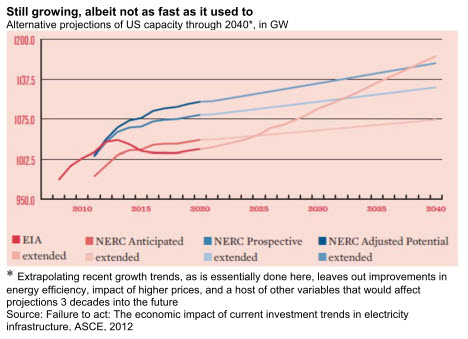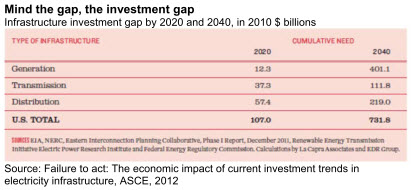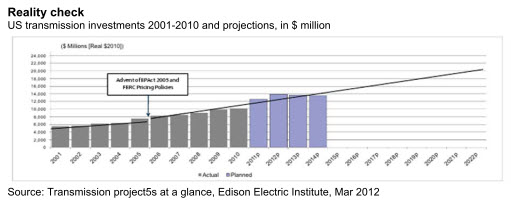This is a sample article from the June 2012 issue of EEnergy Informer.
Everybody, it seems, has an opinion about the grid, its inadequacies to meet the greater stresses that are expected to be placed on it by the growth of intermittent renewable energy resources and higher requirements for reliability, in addition to the needed investments to cope with the increasing demand. The latest to join the fray is an unlikely candidate, the American Society of Civil Engineers (ASCE).
In a report released in early May 2012, the professional society claims that “the nation’s complex, patchwork system of regional and local power plants, power lines, and transformers is in the worst shape it has ever been, with 70% of transmission lines and power transformers aged more than 25 years, and 60% of the nation’s circuit breakers currently more than 30 years old.” What is needed is roughly $566 billion “to revitalize the grid through 2020.”

“Extending current investment trends for these assets through 2020 shows an anticipated investment of $566 billion, but also reveals a $107 billion shortfall compared to needs. That investment gap is equivalent to approximately $11 billion in new funding needed each year until the year 2020,” it says.

It is a familiar story, invest more in — fill in the blank — or else something horrible is going to happen. With the current austerity mood and belt tightening — on top of the sluggish demand growth — increasing grid investments may not be as easy as it may appear, no matter how justified. The amount of investment required by 2040, according to ASCE, would exceed the current market capitalization of US investor-owned utilities, which was around $407 billion in 2010.

Another report released by the Edison Electric Institute in March 2012 (see graph above) shows the actual and projected transmission investments through 2014, extended to 2022, which is far enough for most. If future investments fall short of what is needed, the consequences will show up sooner or later.
A noteworthy item in the EEI report is that 77% of transmission investments appear to be driven by or in support of renewable energy projects. This should come as no surprise given the rapid rise of renewable resources, but it does.
Dr. Sioshansi’s latest book, Smart Grid: Integrating Renewable, Distributed & Efficient Energy, is now available for purchase. For a PDF brochure, click here.

